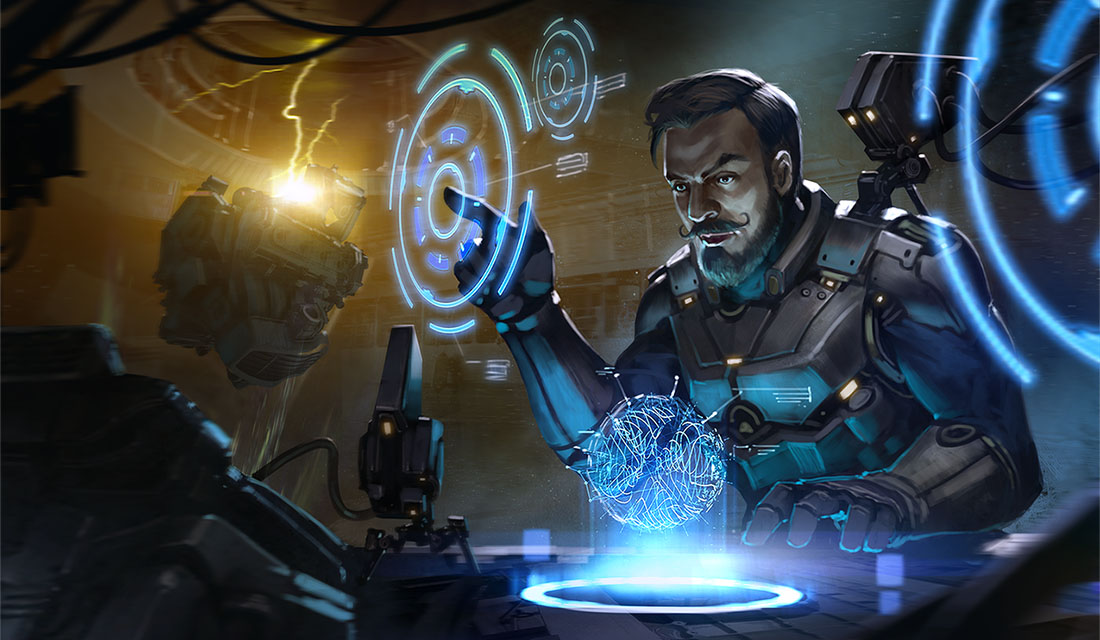

FIREWALL BRIEFING
SUMMONS: PCs are summoned to Nova York. No indication of what their mission may be. Fake IDs are not required, although caution never hurt anyone.
RESEARCH (-20): May allow PCs to pick up some of the details from the briefing before arriving.
VIRTUAL CONFERENCE: Hosted in a VR simulspace as soon as the last PCs’ transport is close enough to mitigate transmission delays.
HOST: Depicted as a featureless shadow. Infomorph in a heavily secured eidolon using a suite of kinesic-denying software.
ITINERARY: Firewall has been tracking a series of apparent async events on Nova York over the past six weeks. Rumors or confirmed reports include:
- A telepathic blast allowing someone to summon medical assistance for someone injured in one of the nickel mines.
- A beaten wife causing her husband to collapse through sheer anger. (The muslim community on Nova York is interpreting the incident as a punishment of sin.)
- A series of minor robberies which may have been aided by post-hypnotic suggestions. (Although traditional cyberbrain-hacking may be the actual culprit.)
- Everyone in an area reportedly “sharing the same thoughts”.
Firewall’s initial suspicion was this might be evidence for a new async. Or possibly an async gang trying to expand into Nova York.
Over the last ten days (which may have been while the PCs were in transit), however, there have been three major incidents:
- Over the course of a week, roughly a dozen people were struck with complete and total amnesia. (They’ve been restored from backups. Medical examinations have found no physical cause for their condition.)
- Twenty people in a Banco de Nova York facility simultaneously experienced a “shared delusion” in which they all dived into the caldera of Olympus Mons.
- A fifty-foot-long section of corridor in the Skin was found transmuted into gold.
A fourth incident – the most significant to date – occurred last night at a club named the Black Light.
- Initial reports suggest a massive incident featuring Casimir force repulsion. To date, only exsurgent asyncs have demonstrated the ability to manipulate the Casimir effect.
- The Black Light is located on the 276th sunward floor of the Harrington Torque, one of the kilometers-tall spindle-scrapers that crisscross Nova York.
The Black Light Incident represents our best lead. Your mission is to identify the cause of the Nova York Events and, if it represents a threat, put an end to it.
BACKGROUND – NOVA YORK (9 METIS)
Nova York is described in detail in Rimward, pg. 26. This section is a brief summary of information from Rimward and also contains original material pertinent to this scenario.
- Population: 500,000 (third largest habitat in the belt)
- 9 Metis: Large nickel-iron and silicate asteroid. (Not to be confused with the moon of Jupiter by the same name.)
THE CAVERN
- CENTRAL CAVERN: Spherical, 4 km in diameter, 200m beneath the asteroid’s surface.
- LIGHTING: Huge light tubes in the outer walls. At night, the lights of the buildings cause the surface of the sphere to resemble an enormous geode.
- GRAVITY: Microgravity of 1/140th g. (Up and down have little meaning. Falling is irrelevant as air pressure and low gravity eliminate any risk of injury.)
- SPINDLE-SPIRES: Thousands of exceptionally tall and fragile-looking buildings that extend between 100 and 150m above the surface, with a large number that extend all the way across the cavern.
- Durable frame, with reflective or translucent materials that play with ambient light in the cavern.
- Residents often jump from one building to another.
THE SKIN: Refers to all the tunnels burrowing through the asteroid around the central cavern. Most of these are the result of mining, but many have been converted to low-rent housing and the like.
NOYO ECONOMICS
- NOYO: The locally produced currency. No other form of currency is accepted.
- Value of the noyo decreases over time from the date of issue, which is meant to stimulate spending, discourage currency speculation, and prevent wealth accumulation.
- Value of noyo is pegged to local reputation network, so people with high Noyo rep have their currency devalue at a slower pace.
- Tends to warp the local rep economy – people tend to avoid “narcing” on their friends because it can create a negative feedback loop when money is on the line.
- BANCO de NOVA YORK (BdNY): Manages all financial transactions and is the habitat’s legal custodian.
- Residents and businesses rent their roofs; no one owns property.
- EXTROPIAN: Other than the Noyo and BdNY, Nova York is generally extropian.
- Private contracts for security, insurance, legal code, etc.
- Each building is often a collective (either closely-knit or purely functional), often sharing contractural services.
NOYO CULTURE
- Cultural melting pot.
- Wide variety of religious memeplexes.
- Heavily based around visual arts – sculpture, architecture, light-sculpting, sensory experiences, AR experiences, aerial dance routines, etc.
- Planning to host an Intergalactic Art and Culture Show next year to draw tourists and residents.
BACKGROUND – PSI-EPSILON OPENER
Psi-opener drugs, as described in the core rulebook (pg. 325), are a variant of the Watts-MacLeod strain that temporarily imbue users with the ability to use one particular psi sleight. Neuralite (a well-cloaked subsidiary of the Cognite hypercorp) has been developing an experimental psi-epsilon opener. They’re hoping to unlock the powerful psi-epsilon abilities available only to exsurgents, but crossing the relatively benign Watts-MacLeod virus with active strains of the exsurgent virus is obviously incredibly dangerous.
The psi-epsilon opener is a binary compound: The epsilon primer and the epsilon psike-out. The opener only becomes fully active when the epsilon psike-out is taken by a primed subject.
Testing of the compound proved difficult because it had a very low success rate in laboratory trials. Neuralite’s scientists estimated that for every 1,000 test subjects they brought in, only one might actually manifest psi powers due to the safeguards they had added to the virus’ DNA.
As a result, Neuralite decided to test the compound by pumping the first part of the compound into the H2O supply of Nova York in order to saturate the population in preparation for the “activation event”. Their theory is that when they add the epsilon psike-out to the water supply in a few days, they’ll create roughly 500 powerful asyncs.
The early, minor async events in Nova York are due to an unexpected side effect from the epsilon primer: Citizens who are already asyncs (many of them minor asyncs who don’t even realize they have powers) are experiencing spontaneous and uncontrollable outbursts of psi energy.
The major async events in the last few weeks are the result of Neuralite performing isolated tests of the epsilon psike-out compound.
Epsilon Primer: The primer is essentially a complicated receptive capsid and does not contain any active exsurgent virus. This means that most people exposed to the virus are at no risk and their bodies will flush the primer out of their system within two weeks. The exception to this are asyncs, who must make a Moxie x 20 test once per day while exposed to the drug. On a failure, they’ll manifest a powerful and out-of-control version of a psi sleight. This experience generally inflicts 1d10+5 SV.
Epsilon Psike-Out: If taken by someone under the effects of the epsilon primer, the victim must make a Moxie x 10 test. (An async suffers a -30 penalty on this check.) On a success, the drug only has the effect of a normal psi-opener and psike-out (see Eclipse Phase, pg. 325). On a failure, the victim receives the permanent use of a random psi-epsilon sleight and also benefits from the effects of psike-out. Unfortunately, this also means that he victim is infected with the haunting version of the exsurgent virus (see Eclipse Phase, pg. 366). Each time they use the psi-epsilon sleight, there is a 10% chance that this will upgrade to the mindstealer version of the exsurgent virus (see Eclipse Phase, pg. 367).
ALL HELL BREAKS LOOSE
The epsilon psike-out is scheduled to be released 1d10+1 days after the PCs arrive. (It may happen sooner if Neuralite realizes they’re being investigated and Radom or Vangelis decide to pull the trigger.)
If the PCs fail to prevent the release of the epsilon psike-out, it’s a catastrophe: Neuralite’s estimates are off by a factor of ten (and they also don’t realize they’re creating exsurgents instead of empowered transhuamns). 5,000 psi exsurgents will be created in Nova York (emerging over the course of 1-2 weeks). At fully 1% of the population, they probably can’t be contained. The end result is that Nova York is likely to be quarantined or destroyed.
REVELATION LIST
| Location | Clue | Leads To |
| Black Light | Protoplasmic Vomit | Medical Analysis (Node 3) |
| Black Light | Drink Fabber - Canister | Neuralite (Node 4) |
| Black Light | Drink Fabber - Chemical Residue | Medical Analysis (Node 3) |
| Black Light | Surveillance Footage | Modya Oborskaia (Node 2) |
| Modya Oborskaia | Tissue Sample | Medical Analysis (Node 3) |
| Modya Oborskaia | Constant Thirst | Water Treatment (Node 5) |
| Modya Oborskaia | Interrogation | Neuralite (Node 4) |
| Medical Analysis | Modya's DNA | Modya Oborskaia (Node 2) |
| Medical Analysis | Epsilon Psike-Out | Neuralite (Node 4) |
| Medical Analysis | Water Samples | Water Treatment (Node 5) |
| Neuralite Office | Research Into Neuralite's Contacts | Water Treatment (Node 5) |
| Neuralite Office | Modya Surveillance | Modya Oborskaia (Node 2) |
| Neuralite Office | Cell Cultures | Medical Analysis (Node 3) |
| Neuralite Office | The Plan | Water Treatment (Node 5) |
| Water Treatment Plant | Neuralite Personnel & Equipment | Neuralite (Node 4) |
INVESTIGATING OTHER INCIDENTS
Following up on the events prior to the Black Light is not necessarily fruitless, but there’s not much to go on:
- The people who experienced the telepathic blast have not repeated the experience (although one is, in fact, a weak async and just doesn’t know it).
- The beaten wife is currently being sheltered by her mosque. (She’s an async trying to deny her abilities due to a religious belief that they come from Shaitan.)
- There are no functional leads on the robberies.
- The people suffering from amnesia have no memory of the event (no pun intended). None of them are responsible for the amnesia and neither their egos nor their morphs have anything abnormal about them.
- There’s no indication of who (or what) was responsible for the transmutation (and the owners of the mine have sealed the area off).
Tissue samples taken from the telepath or the beaten wife contain high concentrations of the psi-epsilon opener. It’s difficult to isolate by itself (-20 modifier), but comparing these samples to other relevant samples provides a +10 modifier to those checks. (See Node 3.)
Go to Node 1: The Black Light
















